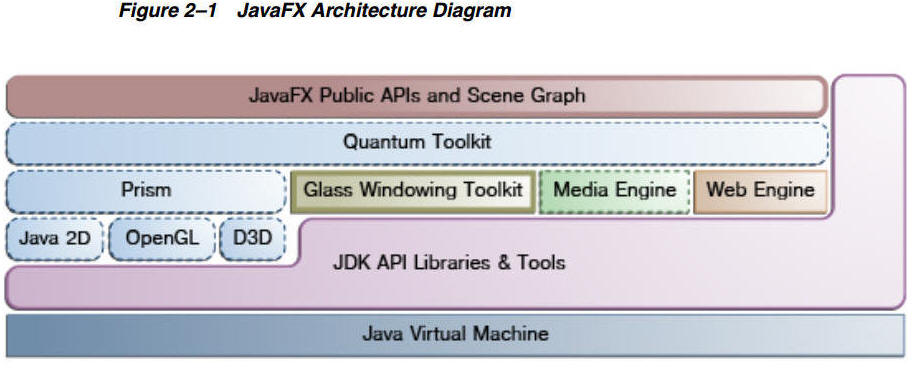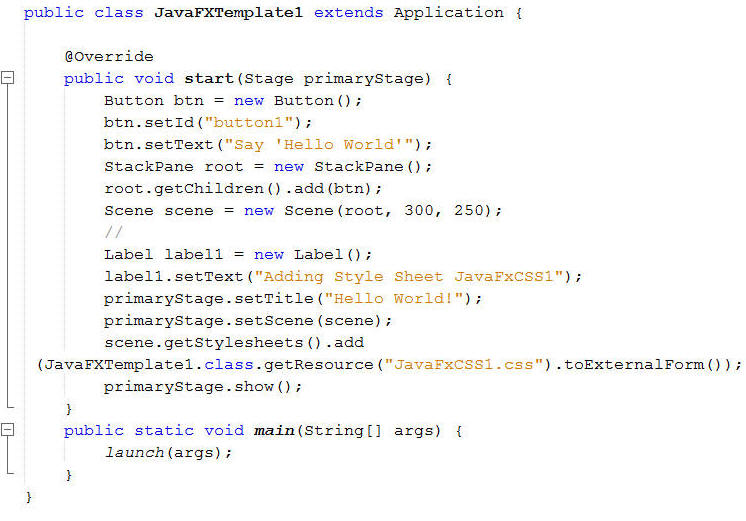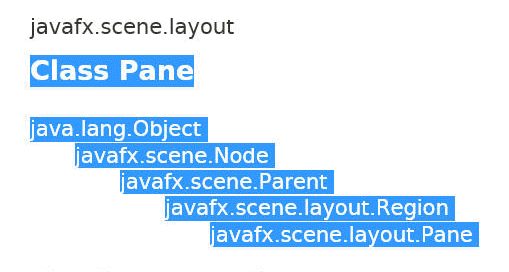- JavaFX is a graphical user interface toolkit
- JavaFX APIs are bundled with the Java SE Runtime Environment (JRE) and the Java Development Kit (JDK ).
- JavaFx allows Cascading Style Sheets (CSS) to style JavaFX applications.
- has Swing intgeroperabitlity
- RichText Support
- 3D graphics

Controls in JavaFX
the javafx.application.Application class, and we must override the start method, and set up Stage, Scene, and Pane.

- The start() method is the main entry
point for all JavaFX applications. The main() method simply invoke Application.launch() method. - Stage: A JavaFX application defines the user interface container by with "stage" and a "scene", contours.
- Stage class is the top-level JavaFX container, where as Scene Class is the container for all content
- The Scene class displays the objects, and represented as a hierarchical nodes.
- A JavaFX Node is a base class for all scene graph nodes to be
rendered. A scene graph will contain children nodes by using a
container class such as the Group or
Pane class- Scene.layout overview

- Here root node is a StackPane
- Other SubClasses:
- AnchorPane, allows the positioning of its child Nodes relative to the edges of the AnchorPane
- BorderPane,
- DialogPane,
- FlowPane,arranges its child nodes in a straight line, one
after the other. The layout is horizontal by default, and can be
changed to vertical by setting
pane.setOrientation(Orientation.VERTICAL) - GridPane, sets child Nodes in a “grid” of rows and columns
- HBox,
- PopupControl.CSSBridge,
- StackPane,
- TextFlow,
- TilePane,
- VBox
- Scene.layout overview